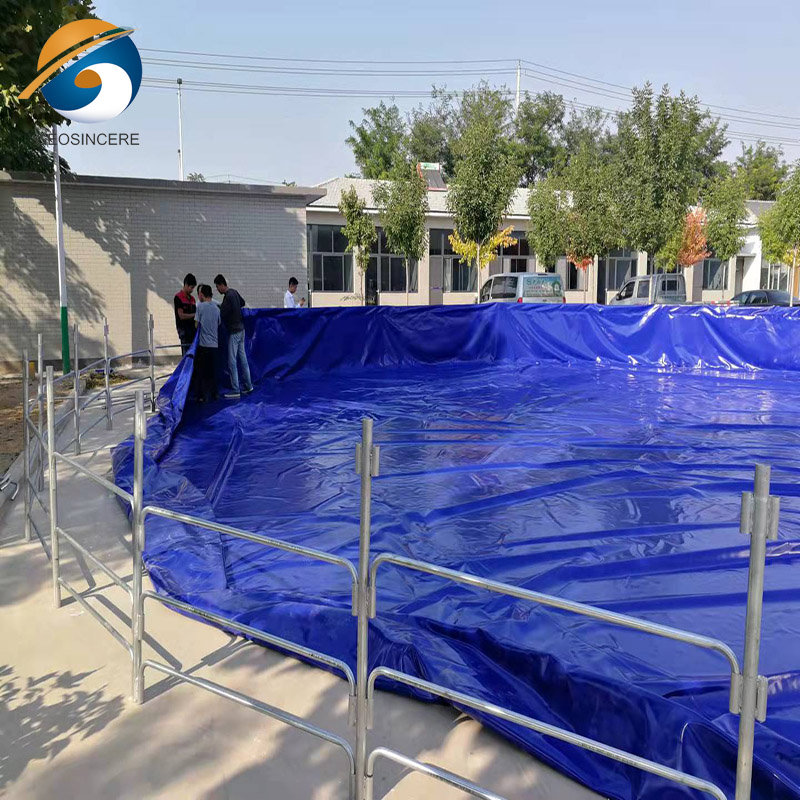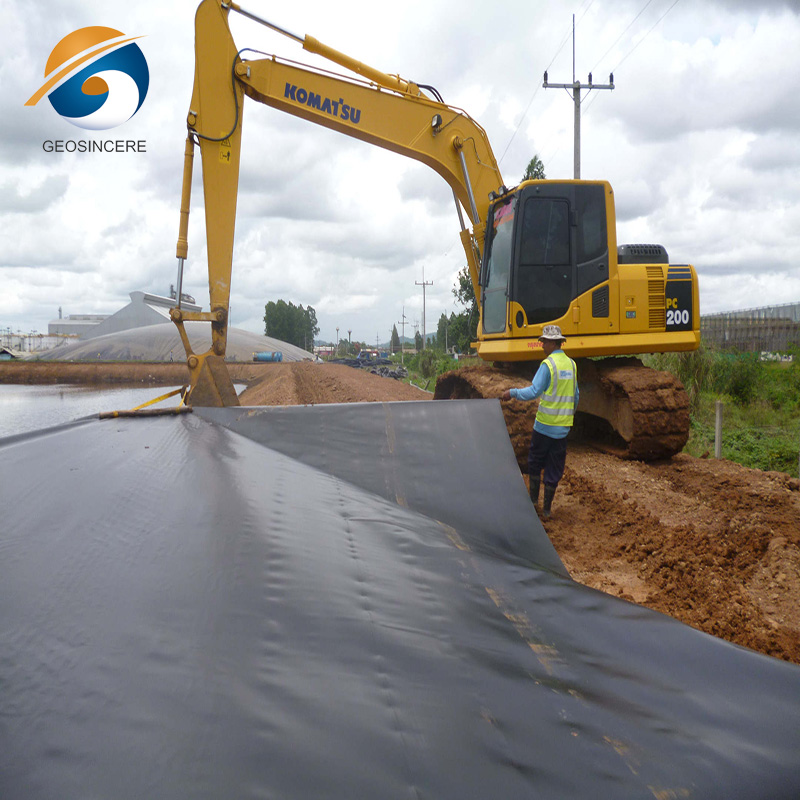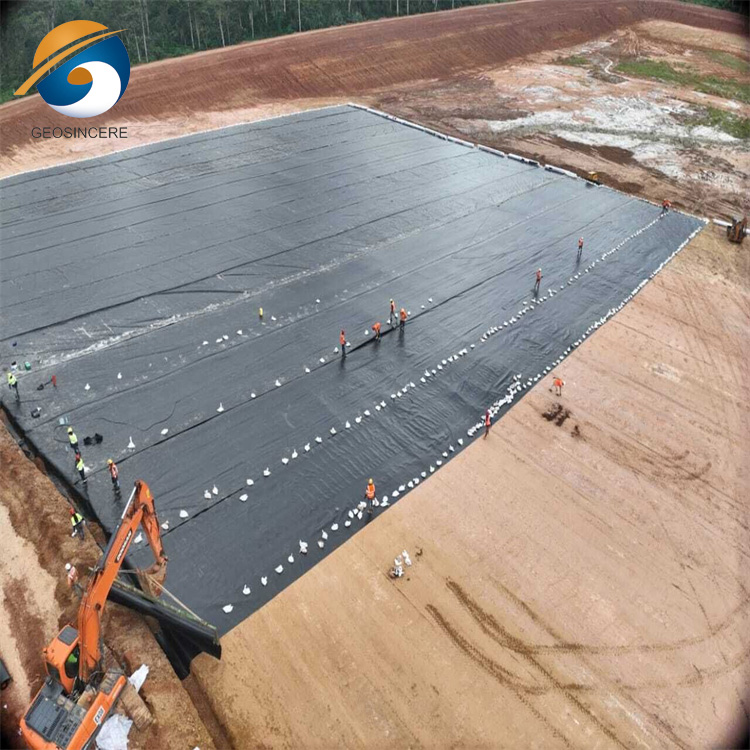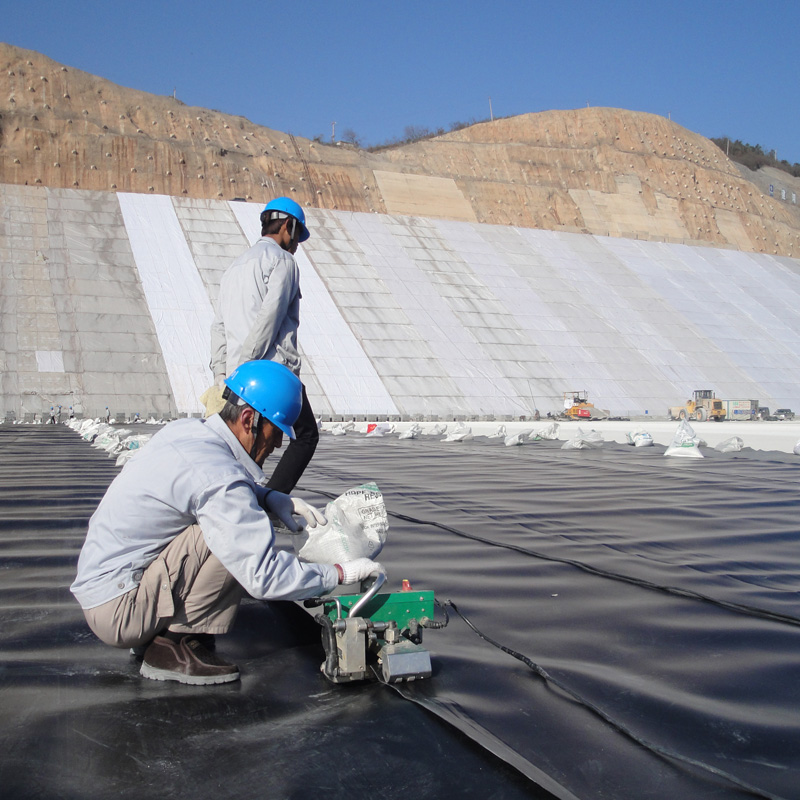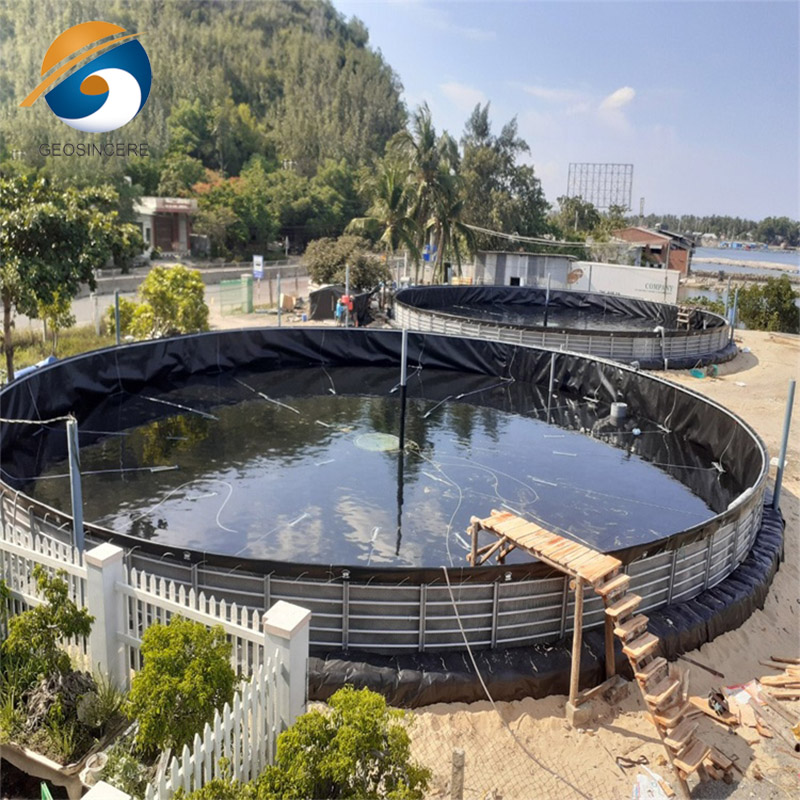How To Build A Aquaculture Pond With A Geomembrane Liner?
Geomembranes liner are impermeable sheets made of high-quality synthetic materials that are designed to be durable, resistant to UV degradation, and chemically stable.A geomembrane liner is a common solution for aquaculture ponds,widely used in aquaculture for pond lining and containment.The geomembrane liner is designed to withstand various environmental conditions, including exposure to UV radiation, extreme temperatures, and microbial attack. Its flexibility allows it to conform to the contours of the pond bed, ensuring a tight seal and minimizing the risk of leakage.It can be customized to fit the specific dimensions of the pond, reducing wastage and installation time.
Building an aquaculture pond with a geomembrane liner is a meticulous process that requires careful planning and adherence to specific guidelines.This article provides a comprehensive step-by-step guide to assist in the construction of an aquaculture pond with a geomembrane liner. Each step is essential for ensuring the successful construction and operation of the aquaculture pond. You can create a well-designed and durable aquaculture pond with a geomembrane liner.
1. Site Selection
Choose a suitable location for the pond, considering factors such as access to water, soil type, topography, and proximity to electricity and other necessary facilities. Ensure that the site has adequate space for the desired pond size and future expansion.
1.1 One of the primary considerations is access to a reliable water source.
Sufficient and quality water supply is essential for maintaining the desired water parameters such as temperature, oxygen levels, and salinity. The availability of a nearby water source, such as a river, lake, or well, is important to meet the water demands of the aquaculture system.
1.2 Soil conditions play a vital role in the construction and functioning of the pond.
The soil should have good compaction characteristics to prevent seepage and leakage of water. Clay soils are commonly preferred due to their low permeability, while sandy or gravelly soils may require additional measures such as liners or soil amendments to minimize water loss.
1.3 The topography of the site is another important consideration.
The land should have a suitable slope or be easily modifiable to allow for efficient water management and drainage. Ideally, the site should have a gentle slope to facilitate water flow and prevent water stagnation, which can lead to oxygen depletion and the accumulation of toxins.
1.4 Sunlight exposure is crucial for the growth of aquatic plants and algae.
Which form the base of the food chain in aquaculture systems. The site should receive adequate sunlight throughout the day to support photosynthesis and promote a healthy ecosystem. Shading from trees or nearby structures should be minimized to optimize light penetration.
1.5 Proximity to utilities such as electricity and freshwater supply is advantageous for the operation.
Access to electricity is essential for operating aerators, pumps, and other equipment, while a nearby freshwater supply can serve as a backup or emergency source if needed.
2. Design And Planning
The determination of pond size, shape, depth and slope is essential and depends on the specific requirements of the target species and the chosen production system. Different species have varying space requirements, feeding habits, and environmental preferences. By understanding these factors, the design parameters can be tailored to meet the needs of the species and optimize production.
2.1 Pond size is determined by factors such as the desired production capacity, available land area, and the carrying capacity of the system.
It should provide enough space for the aquatic organisms to grow, move, and exhibit their natural behavior without overcrowding. Overcrowding can lead to stress, competition for resources, and increased disease incidence.
2.2 The shape of the pond can impact water circulation, sedimentation, and oxygen distribution.
Common shapes include rectangular, circular, or oval. The choice of shape depends on factors such as the site layout, water management requirements, and the desired ease of construction and maintenance.
2.3 Pond depth is an important consideration
For fish species that require specific thermal regimes or have specific depth preferences.Deeper ponds can provide thermal stratification, allowing fish to find their preferred temperature zones. However, depth should be balanced with considerations of oxygen availability, ease of pond management, and potential for sediment accumulation.
2.4 The slope of the pond bottom affects water circulation, sedimentation, and waste removal.
A gentle slope allows for efficient water flow, while excessive slope can lead to erosion and uneven distribution of nutrients. The slope should be carefully designed to ensure proper water exchange and minimize the accumulation of organic matter and sediments.
3. Excavation
Excavating the pond area is a critical step in constructing an aquaculture pond according to the planned dimensions and slope. The process involves removing soil to create the desired shape and depth for the pond.
Firstly, vegetation, including grass, weeds, and bushes, needs to be cleared from the pond area. This is important because vegetation can interfere with the construction process and potentially damage the liner.
Next, rocks, stones, and debris should be carefully removed from the excavation area. These objects can puncture or damage the geomembrane liner, compromising its effectiveness as a waterproof barrier.
The soil is gradually removed in layers, following the planned dimensions and slope. It is important to ensure that the sides and bottom of the excavation are smooth and free from irregularities to facilitate proper installation of the liner.
4. Soil Preparation
Compacting the soil on the pond bottom and sides is a crucial step in soil preparation for the installation of the geomembrane liner. Compaction provides a stable foundation, minimizes the risk of settling, and reduces the potential for damage to the liner.
The process of soil compaction involves using heavy machinery or compactors to compress the soil layers. This helps increase soil density, reduce permeability, and enhance stability. Compaction ensures that the soil is well-settled and capable of supporting the weight of water and the aquatic organisms to be housed in the pond.
Additionally, it is important to remove any sharp objects or stones that could potentially puncture the liner.It is essential to be thorough in this process to minimize the risk of punctures or tears in the liner.
By properly compacting the soil and removing sharp objects, the soil preparation ensures a stable and secure foundation for the geomembrane liner, reducing the likelihood of damage and ensuring the long-term effectiveness of the pond lining system.
5. Liner Installation
5.1 Unroll the liner
Begin by unrolling the geomembrane liner gradually and carefully. Start from one end of the pond and gradually unfold the liner, working towards the opposite end.
5.2 Cover the entire excavated space
Ensure that the liner fully covers the entire excavated area of the pond. The liner should extend beyond the edges of the excavation to provide sufficient coverage and allowance for anchoring.
5.3 Avoid wrinkles and folds
Smooth out the liner as it is being unrolled to avoid any wrinkles or folds. Wrinkles and folds can create weak points in the liner, which can compromise its integrity and increase the risk of damage or leakage.
5.4 Anchor the liner securely
Securely anchor the liner to the edges of the pond to prevent movement or shifting. Common methods of anchoring include the use of sandbags, rocks, or other suitable materials.
5.5 Check for tautness
The liner should be stretched taut across the pond to minimize any sagging or slack. A taut liner helps maintain its structural integrity and prevents accumulation of water or debris.
5.6 Trim excess liner
Once the liner is securely anchored, trim any excess material beyond the edges of the pond. This will ensure a neat and clean appearance and prevent any interference or entanglement with other components of the aquaculture system.
6. Seaming And Welding
When joining multiple pieces of geomembrane liner together, it is important to follow proper seaming and welding techniques to ensure a strong and leak-free connection.
6.1 Select the appropriate seaming method
Choose between heat welding and chemical welding based on the liner type.
6.2 Prepare the liner edges
Ensure clean, dry, and debris-free edges. Trim irregularities to create straight edges.
6.3 Follow manufacturer's instructions
Adhere to recommended temperature, speed, pressure, and other parameters for optimal seam strength.
6.4 Perform a seam test
Test the seam for leaks by pressurizing or conducting a water-filled test. Repair or redo any leaks.
6.5 Maintain quality control
Inspect equipment, verify settings, and assign trained personnel to ensure quality and minimize leaks.
7. Quality Assurance And Testing
Slowly fill the pond with water, monitoring the liner for any signs of leakage or stress. Avoid sudden surges in water flow that could damage the liner. Periodically check the water level and make adjustments as necessary.
A thorough inspection of the liner and all associated components is essential to detect any leaks, tears, or damages. Conducting a water leakage test further verifies the integrity of the liner and ensures its effectiveness in holding water. By addressing any issues early on, the risk of stock escape, water loss, contamination, and operational inefficiencies can be mitigated, leading to a more successful and sustainable aquaculture system.
8.Conclusion
The geomembrane liner plays a vital role in safeguarding the aquatic environment. It acts as a barrier between the aquaculture system and the surrounding ecosystem, preventing potential contamination from entering or exiting the facility. This is crucial for preventing the spread of diseases, parasites, or pollutants that could harm both the farmed organisms and the natural environment. By maintaining a secure and isolated environment, the geomembrane liner helps ensure the health and well-being of the aquatic species being cultivated.
Constructing an aquaculture pond with a geomembrane liner requires meticulous planning, adherence to guidelines, and attention to detail. By following this step-by-step guide and seeking expert advice, individuals can successfully build a functional and efficient aquaculture pond for their specific requirements.



